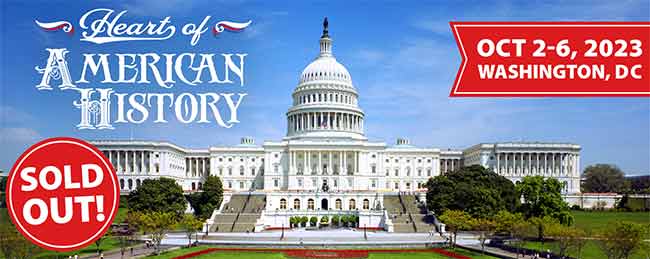
“Then Jesus said to his disciples, ‘If anyone wishes to come after me, he must deny himself, and take up his cross and follow Me. For whoever wishes to save his life will lose it; but whoever loses his life for My sake will find it.’” —Matthew 16:24, 25
Whitman Mission Established, August 30, 1846
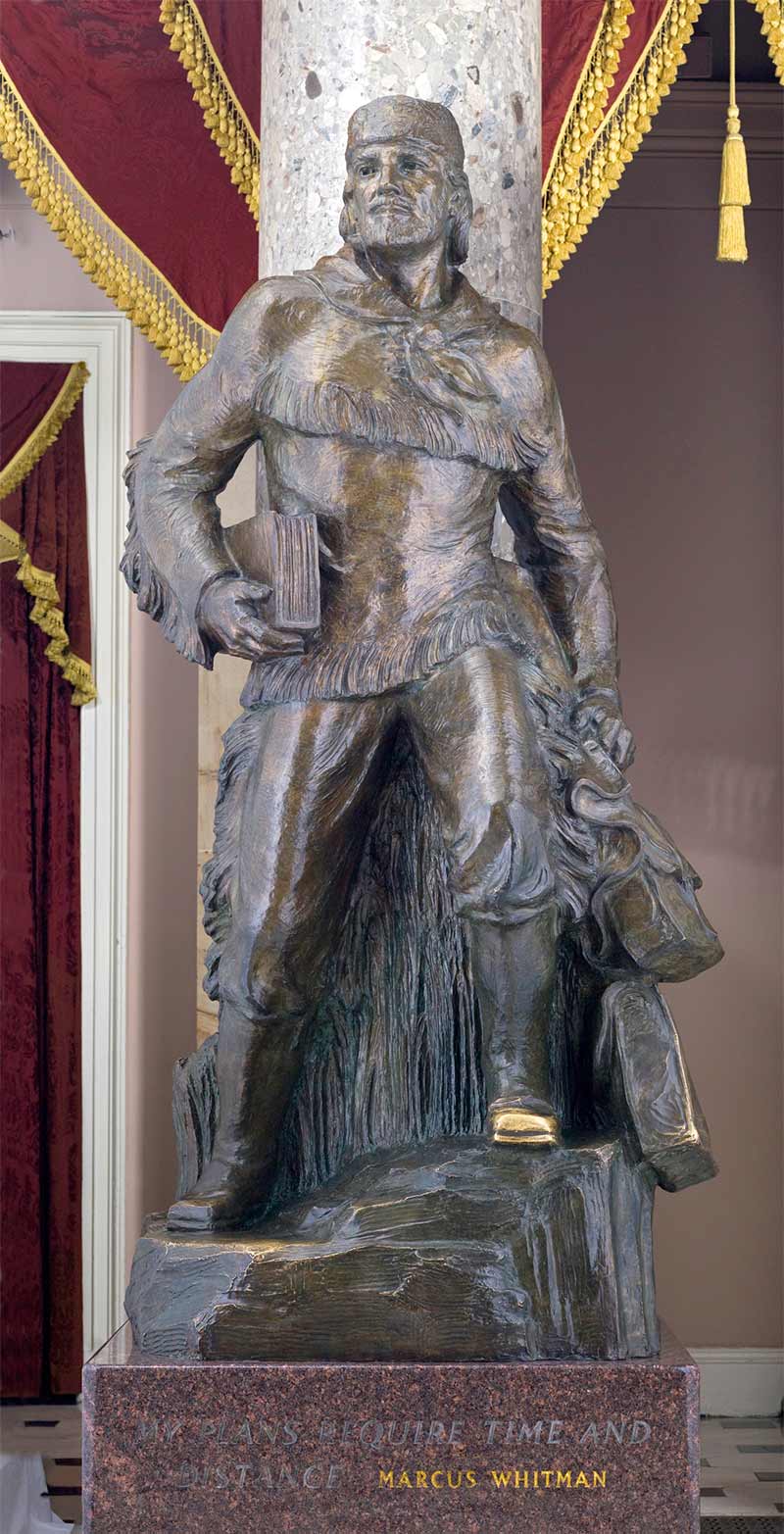
Marcus Whitman bronze memorial by Avard Fairbanks, given in 1953, as shown in the National Statuary Hall, U.S. Capitol, 2011
|
 very state is allowed to install two memorial state representative images in Statuary Hall in the United States Capitol. In 1953 the State of Washington set up a beautiful bronze statue of a frontiersman in buckskins with a Bible under one arm and his saddlebags under the other. The statue represents the Presbyterian missionary Marcus Whitman, an intrepid and skilled frontier doctor and preacher of the Gospel. He blazed a trail to the Oregon Territory, where he brought the Word of God to the Nez Perce and Ojibwa tribes. On August 30, 1846, he and his new wife Narcissa began their ministry to the latter tribe. The following year they were martyred along with twelve other settlers, near Walla Walla. In 2021, Governor Jay Inslee signed legislation to remove his statue in Washington, D.C. and replace it with that of a Native American “environmental activist.” Away with the hegemonic white supremacist Bible-thumper! very state is allowed to install two memorial state representative images in Statuary Hall in the United States Capitol. In 1953 the State of Washington set up a beautiful bronze statue of a frontiersman in buckskins with a Bible under one arm and his saddlebags under the other. The statue represents the Presbyterian missionary Marcus Whitman, an intrepid and skilled frontier doctor and preacher of the Gospel. He blazed a trail to the Oregon Territory, where he brought the Word of God to the Nez Perce and Ojibwa tribes. On August 30, 1846, he and his new wife Narcissa began their ministry to the latter tribe. The following year they were martyred along with twelve other settlers, near Walla Walla. In 2021, Governor Jay Inslee signed legislation to remove his statue in Washington, D.C. and replace it with that of a Native American “environmental activist.” Away with the hegemonic white supremacist Bible-thumper!
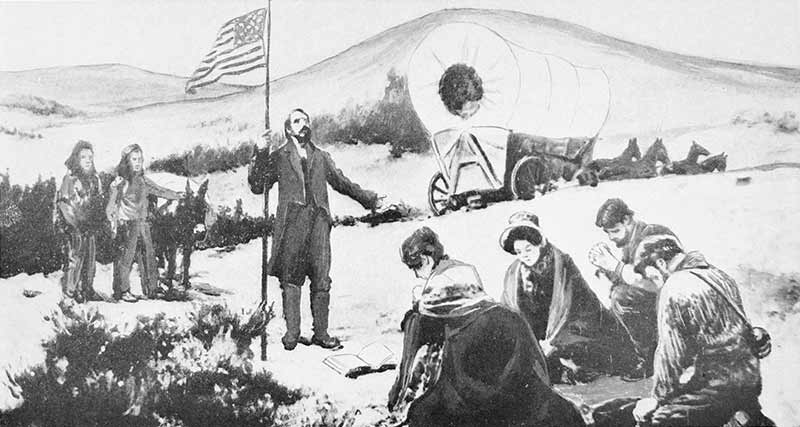
The Whitman Mission is established
Whitman was born in 1802 in western New York, and after the death of his father Beza, he was sent to Massachusetts to live with relatives. He believed he was called of God to preach, but was too poor to attend seminary. Instead, he received medical training to pursue a career of service. He apprenticed with a doctor and was awarded a medical degree from Fairfield Medical College. After attaining his MD, Marcus set up a medical practice and became a church elder. In 1835 he joined missionary Samuel Parker and travelled to the far west to assist in bringing the Gospel to the Nez Perce and providing medical help to trappers during an outbreak of cholera.
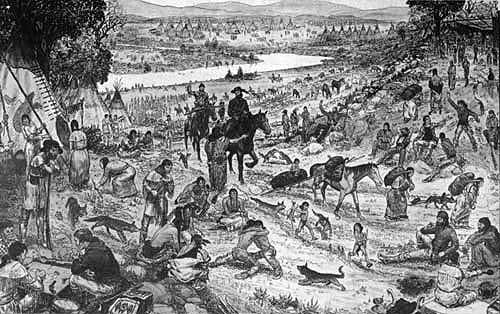
The Rocky Mountain Rendezvous was an annual rendezvous, held between 1825 and 1840 at various locations, organized by a fur trading company at which trappers and mountain men sold their furs and hides and replenished their supplies
The following year, Whitman married Narcissa Prentiss, a physics and chemistry teacher who believed that God had called her to the mission field, but was denied because she had no husband. Marcus fixed that problem and they began preparations to journey to the Northwest Territories. They adopted eleven orphaned children with the surname of Sager and established a boarding school for settler’s children. Whitman joined a wagon train of fur traders heading for the Rocky Mountain Rendezvous, establishing several missions along the way, ending eventually in the Blue Mountains, near modern Walla Walla, in Cause tribal territory. Narcissa became the first white woman to cross the Rockies; they farmed and provided medical care and learned the native languages, as well as establishing a school for native children.
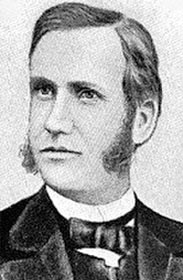
Marcus Whitman (1802-1847)
|
|
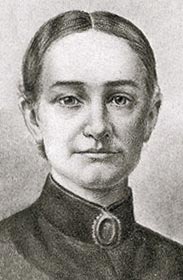
Narcissa Whitman (1808-1847)
|
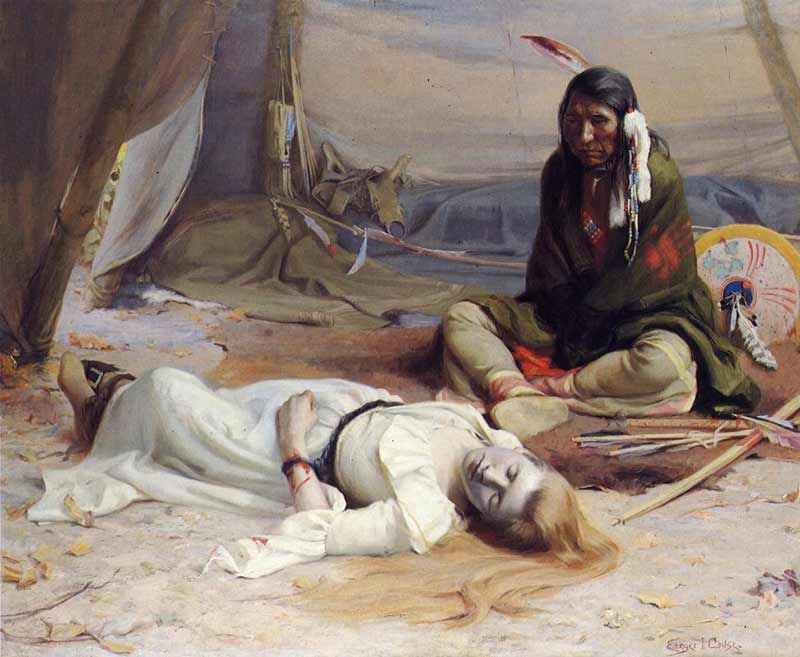
During the Whitman massacre, many captives were also taken, among them 17-year-old Lorinda Bewley, shown here with her captor, Five Crows, who spared her life in hopes of taking her as his wife
|
In 1842 Marcus Whitman returned to the east and accompanied wagon trains of “the great migration” westward again, establishing the “Oregon Trail” for future homesteaders. With the influx of new settlers came diseases that sometimes devastated native populations, who had no immunity to European maladies. In one such epidemic of measles, many of the Cayuse died, especially children. The Whitmans tried to nurse the sick and comfort the dying, but half of the Cayuse died nonetheless. According to ethno-historians, in the Cayuse culture, when a member of the tribe died under care of a medicine man, the family had the right to kill him. They apparently blamed the Whitmans for bringing the disease that could not be healed, and slaughtered the missionaries and twelve other settlers, kidnapping many women and children, and adopting some of them into the tribe to replace their losses. In the “Cayuse War” that followed, five men of the tribe were hanged for murder.
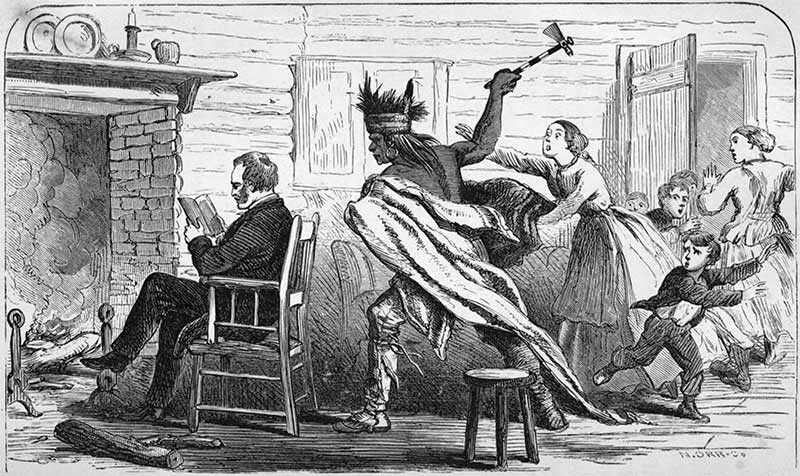
The massacre of Marcus Whitman and his fellow missionaries
The mission continued and the martyred Dr. Whitman and wife were praised and memorialized with Whitman College, the naming of schools, streets and a national park. There are three monuments to Dr. Whitman, but the one in Washington, D.C. has fallen victim once again to intolerance, superstition, and the war on Christianity.
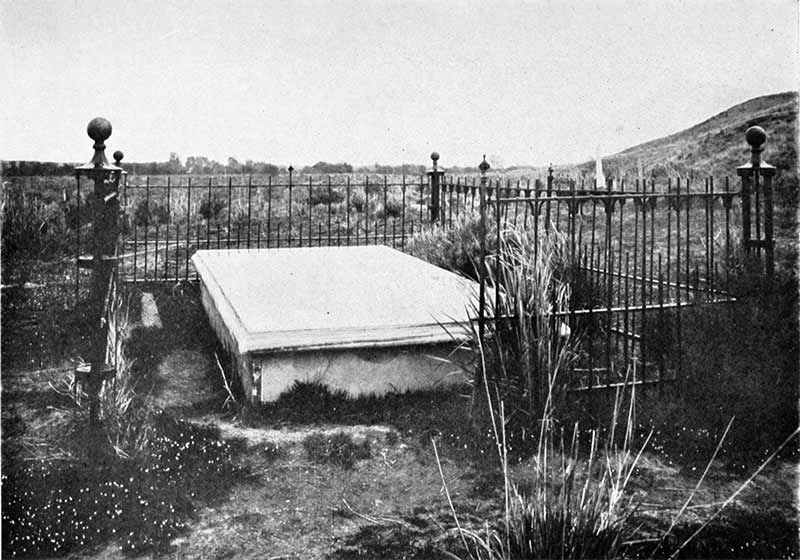
The grave of Marcus and Narcissa Whitman and the other victims of the
Whitman Mission Massacre, including several of the seven Sager children whom the Whitmans had adopted after they were orphaned along the Oregon Trail

Image Credits:
1 Bronze Memorial (wikipedia.org)
2 Whitman Mission (wikipedia.org)
3 Rocky Mountain Rendezvous (wikipedia.org)
4 Marcus Whitman (wikipedia.org)
5 Narcissa Whitman (wikipedia.org)
6 Lorinda Bewley (wikipedia.org)
7 Massacre (wikipedia.org)
8 Grave (wikipedia.org)
|






